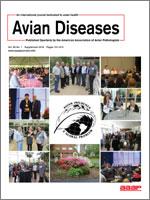One of the longest-persisting avian influenza viruses in history, highly pathogenic avian influenza virus (HPAIV) A(H5N1), continues to evolve after 18 yr, advancing the threat of a global pandemic. Wild waterfowl (family Anatidae) are reported as secondary transmitters of HPAIV and primary reservoirs for low-pathogenic avian influenza viruses, yet spatial inputs for disease risk modeling for this group have been lacking. Using geographic information software and Monte Carlo simulations, we developed geospatial indices of waterfowl abundance at 1 and 30 km resolutions and for the breeding and wintering seasons for China, the epicenter of H5N1. Two spatial layers were developed: cumulative waterfowl abundance (WAB), a measure of predicted abundance across species, and cumulative abundance weighted by H5N1 prevalence (WPR), whereby abundance for each species was adjusted based on prevalence values and then totaled across species. Spatial patterns of the model output differed between seasons, with higher WAB and WPR in the northern and western regions of China for the breeding season and in the southeast for the wintering season. Uncertainty measures indicated highest error in southeastern China for both WAB and WPR. We also explored the effect of resampling waterfowl layers from 1 to 30 km resolution for multiscale risk modeling. Results indicated low average difference (less than 0.16 and 0.01 standard deviations for WAB and WPR, respectively), with greatest differences in the north for the breeding season and southeast for the wintering season. This work provides the first geospatial models of waterfowl abundance available for China. The indices provide important inputs for modeling disease transmission risk at the interface of poultry and wild birds. These models are easily adaptable, have broad utility to both disease and conservation needs, and will be available to the scientific community for advanced modeling applications.
How to translate text using browser tools
5 November 2015
Spatial Modeling of Wild Bird Risk Factors for Highly Pathogenic A(H5N1) Avian Influenza Virus Transmission
Diann J. Prosser,
Laura L. Hungerford,
R. Michael Erwin,
Mary Ann Ottinger,
John Y. Takekawa,
Scott H. Newman,
Xiangming Xiao,
Erle C. Ellis
ACCESS THE FULL ARTICLE

Avian Diseases
Vol. 60 • No. 1s
May 2016
Vol. 60 • No. 1s
May 2016




